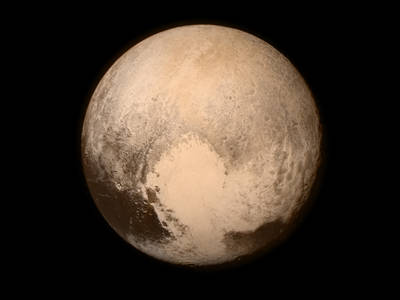 Pluto
Pluto
Articles from The Physics Teacher and American Journal of Physics
How will New Horizons add to our knowledge of Pluto?
A Comparative Planetology Activity, Michael C. LoPresto and Steven R.
Murrel,l Phys. Teach. 48, 296 (2010); http://dx.doi.org/10.1119/1.3393056
Adding Albedo and Atmospheres, Michael C. LoPresto, Phys. Teach. 51, 152 (2013);http://dx.doi.org/10.1119/1.4792009
Assessment of a Solar System Walk, Michael C. LoPresto, Steven R. Murrell and Brian Kirchner, Phys. Teach. 48, 236 (2010);http://dx.doi.org/10.1119/1.3361990
Astronomy: Pluto, William Luzader, Phys. Teach. 27, 304 (1989);http://dx.doi.org/10.1119/1.2342766
Determining Planetary Temperatures with the Stefan‐Boltzmann Law, Michael
C. LoPresto and Nichole Hagoort, Phys. Teach. 49, 113
(2011);http://dx.doi.org/10.1119/1.3543589
How big is a planet?, Gordon McIntosh, Phys. Teach. 38, 534 (2000);http://dx.doi.org/10.1119/1.1341942
How "full" are the outer planets?, Jim Shaw, Phys. Teach. 37, 528 (1999);http://dx.doi.org/10.1119/1.880393
March of the Planets, Bruce Thompson, Phys. Teach. 45, 369 (2007);http://dx.doi.org/10.1119/1.2768696
New Physics and Astronomy songs online, Jeffery Mondak and James M. Benson, Phys. Teach. 46, 447 (2008);http://dx.doi.org/10.1119/1.2981303
Planets X and Pluto, William Graves Hoyt and Kenneth R. Lang, Am. J. Phys. 48, 583 (1980);http://dx.doi.org/10.1119/1.12366
Precipitation in the Solar System, Gordon McIntosh, Phys. Teach. 45, 502 (2007);http://dx.doi.org/10.1119/1.2798364
Pocket Solar System, Cliff Swartz, Phys. Teach. 43, 120 (2005);http://dx.doi.org/10.1119/1.1855752
Why Are So Many Things in the Solar System Round? Steven J. Heilig, Phys.
Teach. 48, 377 (2010);http://dx.doi.org/10.1119/1.3479713

